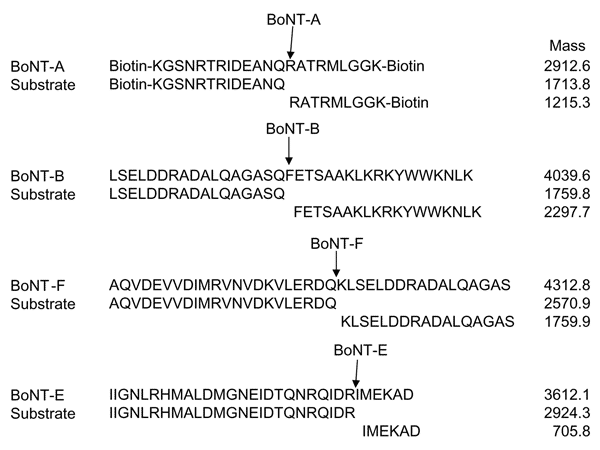Volume 11, Number 10—October 2005
Research
Botulinum Neurotoxin Detection and Differentiation by Mass Spectrometry
Figure 2

Figure 2. Substrate peptide sequences, the botulinum neurotoxin (BoNT) serotype predicted cleavage product sequences, and masses of the substrate and product peptides. Peptides for BoNT-A and -E were derived from the human SNAP (synaptosomal-associated protein)-25 protein. The substrate peptide for BoNT A, 187-SNKTRIDEANQRATKML-203, was modified to biotin(ε)-KG(K189->R and K201->R)GGK-(ε)Biotin. The BoNT-E substrate sequence was also from human SNAP-25 (156–186). Substrate peptides for BoNT-B and -F are from human synaptobrevin 2; the BoNT-B substrate (3) is from 59–93 in the sequence and the BoNT-F substrate is from 35–74.
Page created: February 21, 2012
Page updated: February 21, 2012
Page reviewed: February 21, 2012
The conclusions, findings, and opinions expressed by authors contributing to this journal do not necessarily reflect the official position of the U.S. Department of Health and Human Services, the Public Health Service, the Centers for Disease Control and Prevention, or the authors' affiliated institutions. Use of trade names is for identification only and does not imply endorsement by any of the groups named above.